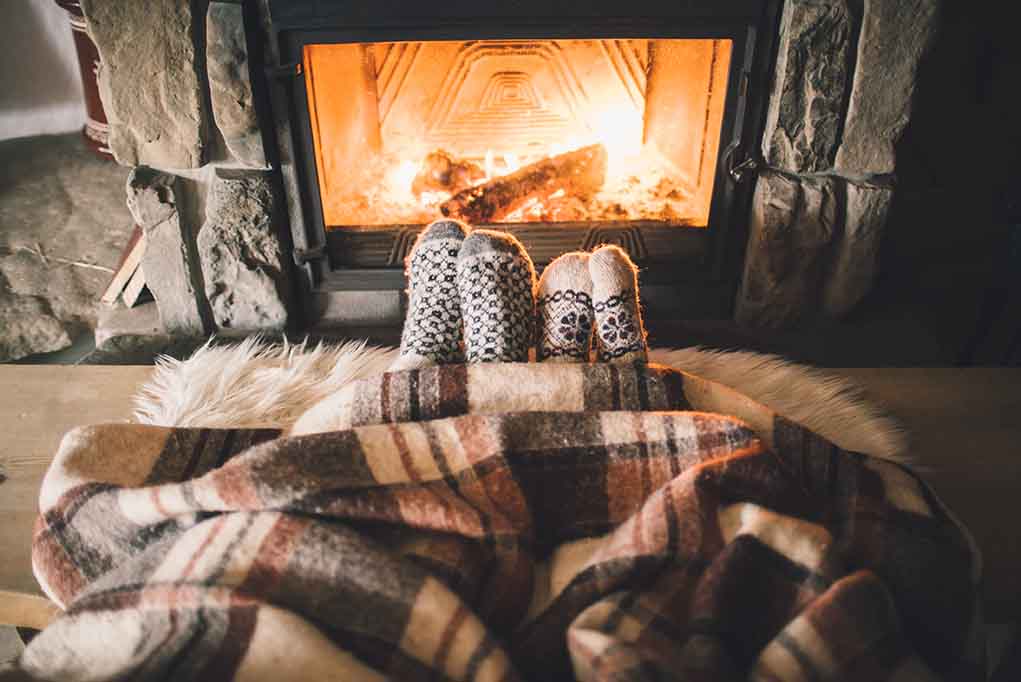
‘Tis the season for snow, ice and blustery winds. Even in warmer climates, when a storm front rolls through, it can cause temperatures to plummet. One worry when the power flickers is that it may go out completely. Not only are you left in the dark, but you can’t cook or heat your home. Here are some useful tips to help stay warm when the power goes out.
Fire Up Non-Electrical Heat Sources
The first move you should make when the power goes out is to gather any available heat sources. Unless you have a standby whole house generator, the power will remain off until electricity returns to the grid. A battery-powered heater can help in a pinch. It’s a safe way to access low-level heat. Keep in mind the run time is minimal, so only use this option if necessary.
It’s time to access a propane or kerosene heater if you have one. These effective appliances provide instant, low-burning heat. Be sure to use them safely and only in well-ventilated areas.
Isolate to One Room
Losing power will likely put you into conservation mode. It’s easier to heat a small space than the entire house, so consider isolating to one room or even a tent inside the house. Gather blankets and create a space to trap warm air and keep cold air out. Add blankets to drafty areas like windows or door jambs to reduce heat loss.
Grab Some Items From the Garden Shed
You can create a DIY heater with household items if you’re in a pinch. Locate a larger terra cotta pot from the shed. Use a couple of bricks to build the base and slip a candle or two inside. Add the pot to the top to create a makeshift stove. This method can provide a small heat source if there are no other options. Use in a well-ventilated area and keep away from children.
Set Up Camp
Creating a home within your home is a viable and savvy solution during a power outage. Revert to primitive camping by setting up your tent inside. Most tents provide protective barriers against the elements, although some are better insulated than others. Choose an area that gets sunlight during the day. With body heat, sleeping bags, and blankets inside, you can quickly generate a warm air mass.
Watch for Signs of Hypothermia
Losing power also means you’ll lose body heat, especially in your hands, head and feet. It’s essential to bundle up quickly and layer your clothing. As body temperature drops under 95 degrees Fahrenheit, hypothermia can set in, especially during sleep.
Watch for signs of hypothermia, including:
- Shivering and shaking
- Confusion or memory loss
- Exhaustion and lethargy
- Shallow breathing and low pulse rate
Any of these symptoms are signs of a medical emergency. Contact 911 immediately.
Now is the time to prepare for the next power outage. Stock your pantry, garage or basement with the essentials you’ll need to survive when there is no electricity. With a few ingenious tips under your belt and some planning, you’ll make it through safely.












